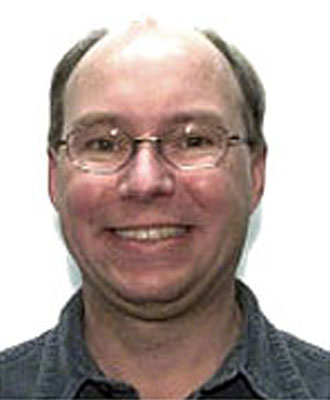Abstract
Using seismic to explore for clastic reservoirs in the Western Canada Sedimentary Basin is often difficult due to the inability to distinguish between interbedded sand and shale lithologies using acoustic impedance. The problem is made even more difficult when the AVO response to sand-shale interfaces distorts the reflection amplitudes on a stacked section.
Geologists typically use a Gamma Ray log (or Vshale log derived from Gamma Ray) for lithology discrimination. Seismic, on the other hand, responds to changes in compressional velocity, shear velocity, and density.
A simple relationship between gamma ray logs and the seismic logs (Vp, Vs, and Density) is established and presented in a visual format.
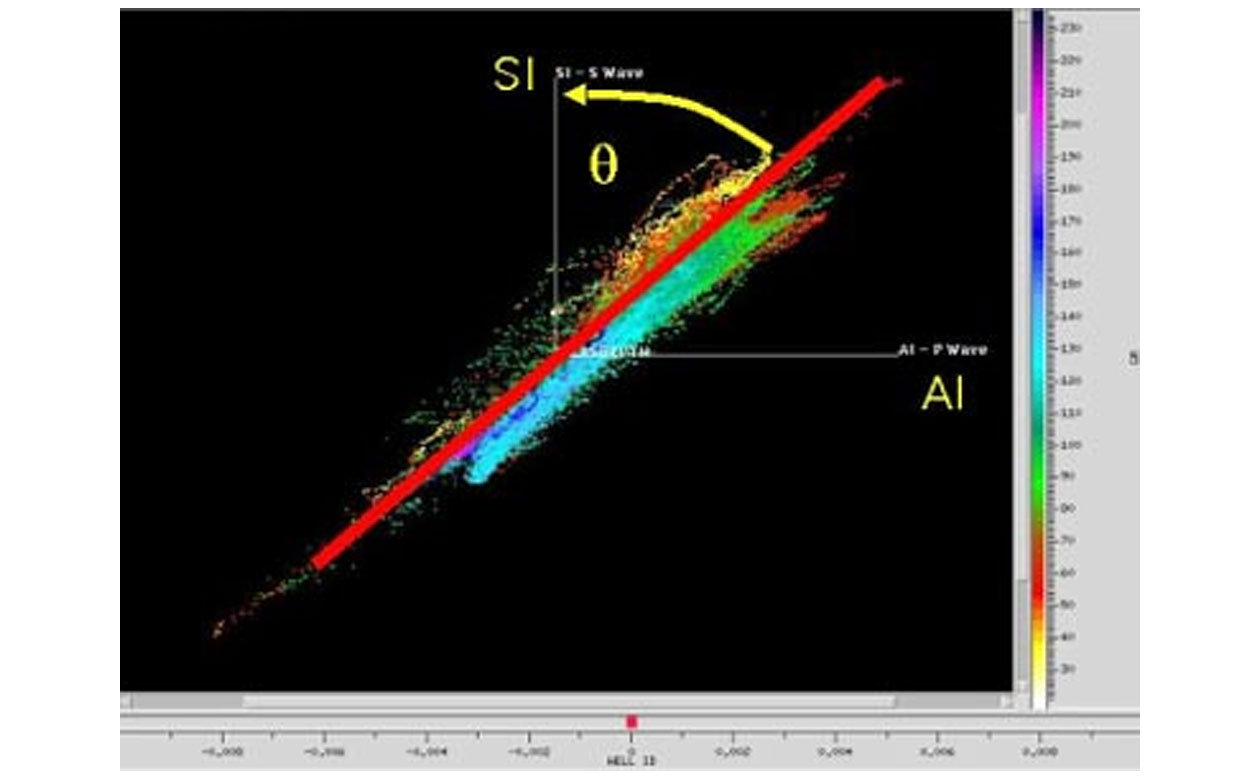
The process is shown to be equivalent to a simple mathematical expression of the form
LI(z) = AI(z) cos(8) - SI(z) sin(8)
where
LI(z) is the estimated lithology impedance (pseudo gamma ray)
AI(z) is the acoustic impedance
SI(z) is the shear impedance
8 is an angle estimated from the impedance curves
z is measured depth along the borehole.
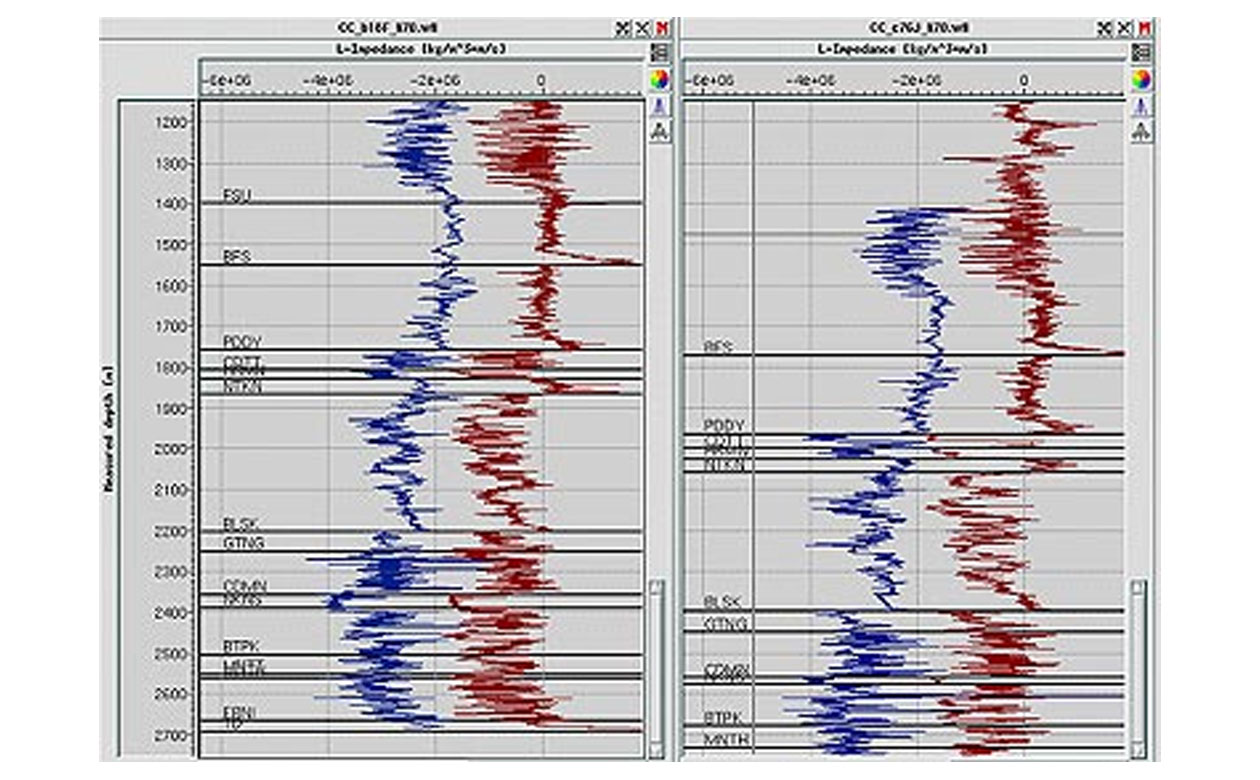
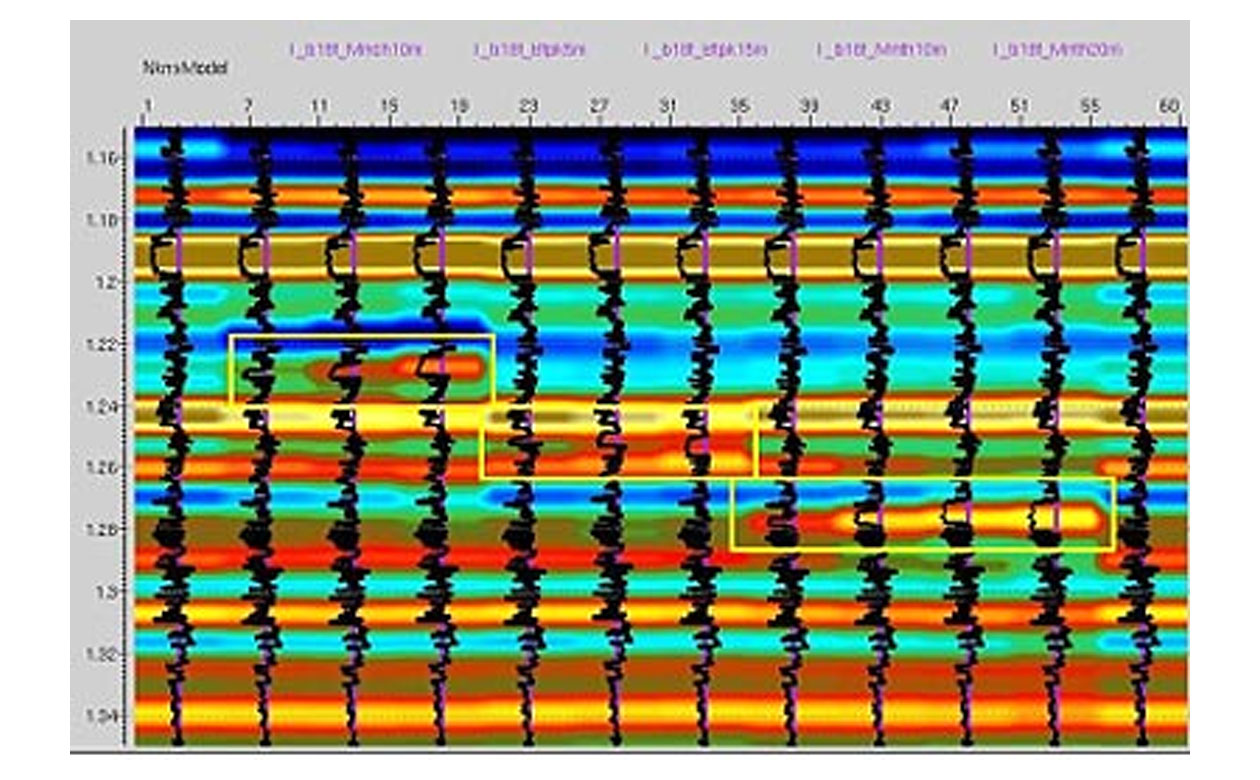 Figure: Model Pseudo Gamma Ray (LI) Section
Figure: Model Pseudo Gamma Ray (LI) SectionA parallel process is developed for the seismic domain which exploits the relationship between changes of amplitude with offset and changes in acoustic and shear impedance.
The process is applied to seismic offset models and shown to be effective for interpreting sand-shale lithologies within limitations imposed by the seismic bandwidth.
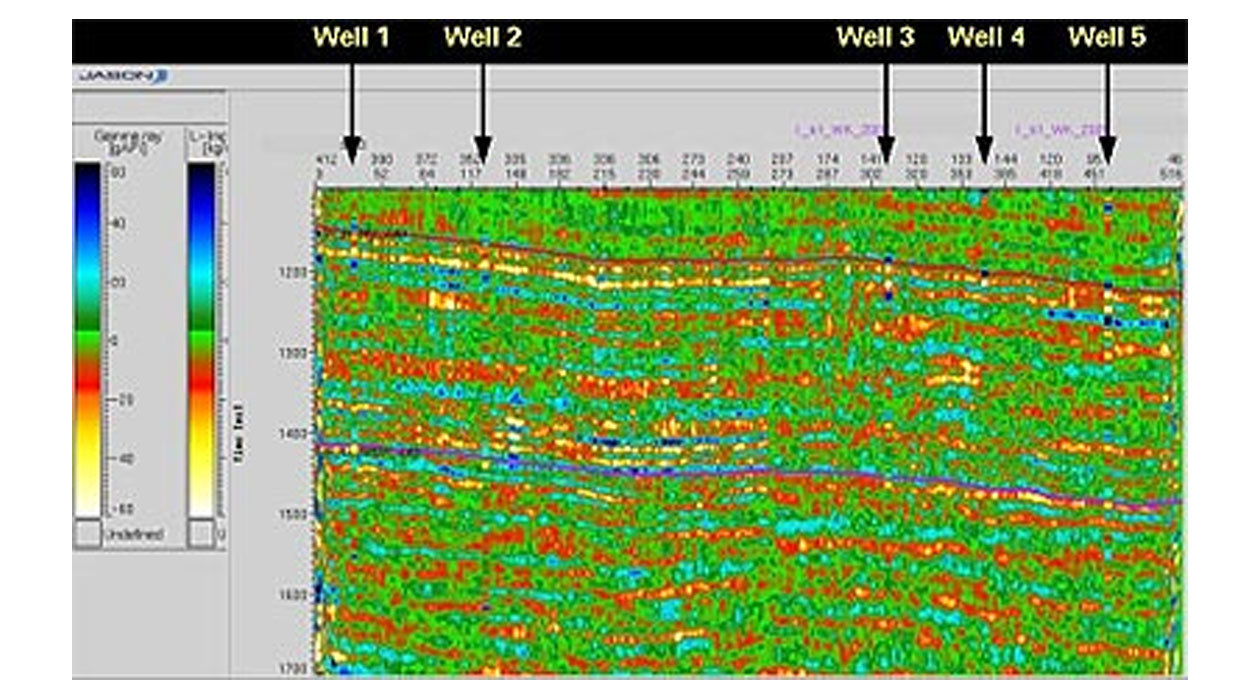
Biography
David O. Timko has a B.Sc. in Pure Mathematics from the University of Alberta in 1979 and an M.Sc. in Statistics and Applied Probability for the University of Alberta in 1982. Dave began a career in geophysics with Amoco in 1980 and returned to the U of A in 1981 to finish his M.Sc. Dave spent four years with Amoco both processing and interpreting seismic from southern Alberta to the Peace River Arch.
In 1985 Dave moved to BP Canada where he spent seven years as a seismic interpreter, mostly in Northern Alberta and Northeast BC, including two years in the Sukunka area working with structural data. Starting in 1992 Dave spent five years consulting for various clients including PanCanadian, Northstar, and Amoco Canada interspersed with teaching basic mathematics at SAIT.
In 1997 Dave rejoined Amoco on a full time basis and now works for BP Canada Energy as a result of the BP Amoco merger. He recently spent a year working as an inversion and modeling specialist in Houston, concentrating on deep water Gulf of Mexico projects. His latest assignment is applying sophisticated seismic interpretation techniques to tight gas prospects.




